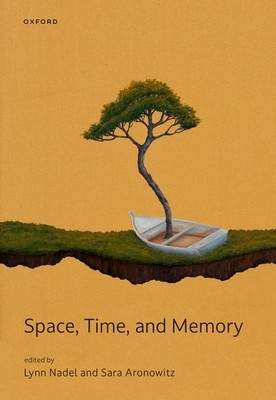
- We will send in 10–14 business days.
- Author: Lynn Nadel
- Publisher: Oxford University Press
- ISBN-10: 0192882546
- ISBN-13: 9780192882547
- Format: 18 x 24.9 x 2.7 cm, kieti viršeliai
- Language: English
- SAVE -10% with code: EXTRA
Reviews
Description
This is an open access title available under the terms of a CC BY-NC-ND 4.0 licence. It is free to read at Oxford Scholarship Online and offered as a free PDF download from OUP and selected open access locations
Memories are not organized by a single arbitrary dimension, such as mere association. Instead, manydimensions have been taken to be part of the structure of memory. Of these, space and time stand out:
all personal experience can in principle be indexed by where and when specific events occurred, and
both scientific evidence and common sense suggest that the way we relate different events together in
memory draws on these dimensions. For instance, to remember what one ate for lunch last Thursday,
one might call up a memory of where one was, or retrace the events of the day leading up to lunch. Some nuts-and-bolts questions arise immediately, starting with whether the spatial or the temporal
dimension is primary. Or rather, do we rely on both equally? Do we represent them separately or
jointly? But there are bigger questions with broad implications: What makes space and time such central
structures in our cognitive world, and what is the conceptual nature of these structures? These
questions are deeply related to one another, though they span multiple fields and methodologies,
touching on philosophy, psychology and neuroscience. Space, Time, and Memory explores three key questions: first, the role of space and time as structures that organize memory, second, theories of the nature of memory itself that draw on space and time, and finally applications of questions about the structure of memory to debates about perception, decision-making, and artifical intelligence.
EXTRA 10 % discount with code: EXTRA
The promotion ends in 23d.05:44:14
The discount code is valid when purchasing from 10 €. Discounts do not stack.
- Author: Lynn Nadel
- Publisher: Oxford University Press
- ISBN-10: 0192882546
- ISBN-13: 9780192882547
- Format: 18 x 24.9 x 2.7 cm, kieti viršeliai
- Language: English English
This is an open access title available under the terms of a CC BY-NC-ND 4.0 licence. It is free to read at Oxford Scholarship Online and offered as a free PDF download from OUP and selected open access locations
Memories are not organized by a single arbitrary dimension, such as mere association. Instead, manydimensions have been taken to be part of the structure of memory. Of these, space and time stand out:
all personal experience can in principle be indexed by where and when specific events occurred, and
both scientific evidence and common sense suggest that the way we relate different events together in
memory draws on these dimensions. For instance, to remember what one ate for lunch last Thursday,
one might call up a memory of where one was, or retrace the events of the day leading up to lunch. Some nuts-and-bolts questions arise immediately, starting with whether the spatial or the temporal
dimension is primary. Or rather, do we rely on both equally? Do we represent them separately or
jointly? But there are bigger questions with broad implications: What makes space and time such central
structures in our cognitive world, and what is the conceptual nature of these structures? These
questions are deeply related to one another, though they span multiple fields and methodologies,
touching on philosophy, psychology and neuroscience. Space, Time, and Memory explores three key questions: first, the role of space and time as structures that organize memory, second, theories of the nature of memory itself that draw on space and time, and finally applications of questions about the structure of memory to debates about perception, decision-making, and artifical intelligence.


Reviews